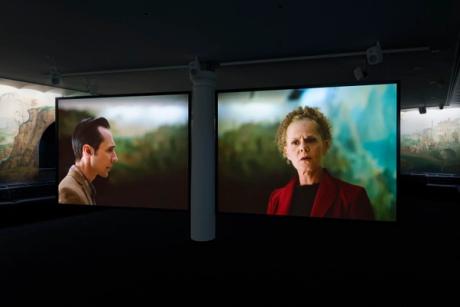
The Tate Britain restaurant mural saga is a compelling case study of the dilemmas of the contemporary museum. The racist imagery in Rex Whistler’s The Expedition in Pursuit of Rare Meats (1926-27), had until 2013 gone unacknowledged—officially, at least. Restored in that year, the mural was then accompanied by a booklet acknowledging the content. A sign appeared a few years later at the restaurant entrance. But it seems most diners ignored the imagery, as they had since its creation.I have to admit my own complicity: before becoming a writer in 2005, as a Tate press officer, I lunched occasionally in that restaurant. The chained Black child and his naked mother in a nearby tree in Whistler’s design are not hidden but slap bang in the middle of one side of the mural. Still, I don’t remember seeing them, which now seems inexplicable. Like so many others, I only became aware of the full horror of Whistler’s painting when the critic duo The White Pube drew attention to it in 2020.In contrast to Chris Ofili’s flawed work responding to the 2017 Grenfell disaster over Tate Britain’s staircase—the problems with the commissioning and content of which the artist and writer Morgan Quaintance addressed (among much else) in Art Monthly’s March issue—the gallery has got the response to the mural furore right. Crucially, it first invited figures from outside the organisation to discuss what should be done. They included artists and art historians, as well as academics and young people. One of the group’s chairs, Amia Srinivasan, an Oxford professor of social and political theory, articulated key questions: “Could the space be used by artists of colour as a creative site of re-appropriation? Or would this unfairly burden them with a problem produced by a historically white institution?”For Keith Piper, a veteran of the BLK Art Group in 1980s Britain, it has proved far from a burden. Piper—whose 2007 Lost Vitrines project had offered a powerful response to the Georgian and Regency rooms of the Victoria and Albert Museum, and the hidden stories of slavery and colonial oppression in their midst—has always grounded his work in research. And Viva Voce, his two-channel video installation made in response to the Whistler mural, dives deep into the archives to inform an unflinching look at the mural, its creation and motivations.It takes Whistler’s youth when he made the work as a springboard for a conversation—hence “viva”—between the flippant artist, played by Ian Pink, and an academic, Professor Shepherd, performed by Ellen O’Grady. As well as asking him to explain his intentions and his use of imagery, Professor Shepherd highlights other Whistler works that point to his overt racism. She refers to the text concocted by Whistler with his friend, the writer Edith Olivier, unseen at first, but published by the Tate in 1954—itself laden with racist language.Keith Piper, Viva Voce (2024) Image: Film still © Keith PiperImportantly, Piper, via the professor, doesn’t allow Whistler, Olivier, Tate et al the tired and familiar get-out clause that these were common views in that period and we should not be judging them by contemporary values and moralities. No: as the film explains, among other things, Whistler and the other Bright Young Things in his circle had ample opportunity to experience Black excellence in 1920s London, not least in the performances of the cabaret singer Florence Mills and jazz musicians.Viva Voce is exactly the kind of “subversive transformation” that Robert Bevan calls for in his book about contested heritage, Monumental Lies: a site of undeserving honour, once called “the most amusing room in Europe”, exposed as a “site of shame” through imaginative commissioning and art-making.




















